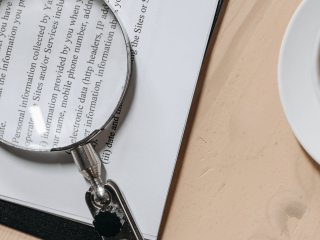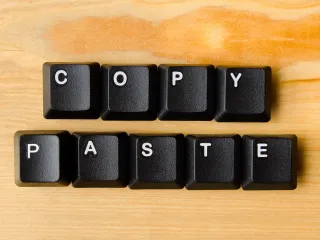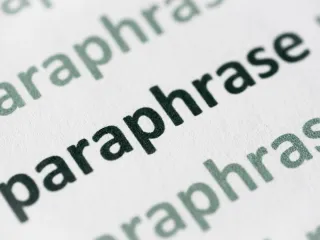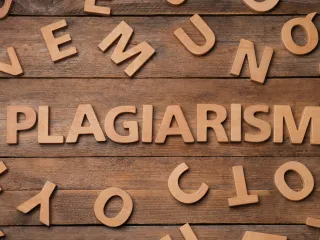Examples of Unintentional Plagiarism
Unintentional plagiarism, also known as accidental plagiarism, occurs when a student, journalist, or writer uses the words of another and does not cite proper sources for the quote. Writers should avoid committing unintentional plagiarism in their own work.
To avoid accidental plagiarism, cite direct quotes properly, paraphrase correctly, and avoid repeating yourself if you often publicly publish writings. While it seems simple to avoid accidental plagiarism, it can be challenging because of rules surrounding self-plagiarism and proper paraphrasing.
Of course, unintentional plagiarism also occurs due to natural human error. It is perfectly normal to make a mistake when writing or copyediting a document, so adding a plagiarism checker as part of your writing process can help remove all doubts related to unintentional plagiarism.
What is Unintentional Plagiarism?
Unintentional plagiarism is the accidental appropriation of another’s ideas due to a lack of knowledge about proper citation and documentation. The only difference between unintentional plagiarism and intentional plagiarism is the lack of self-awareness in presenting others’ ideas as your own.
Unfortunately, in most cases, a mistake that results in unintentional plagiarism bears the same, often significant consequences, as intentional plagiarism offenses. For instance, most colleges have harsh implications for proven plagiarism, ranging from automatically failing a course, a lower grade, academic suspension, or expulsion. For professional writers, a plagiarism discovery can result in decreased credibility in the field or even loss of employment.
Sadly, intentional plagiarism does occur, meaning that a writer is knowingly and voluntarily taking another’s unique thoughts as purporting the idea to be their own. Since this can occur in academic and professional settings, it makes even unintentional plagiarism absolutely unacceptable and stringently punished.
How Does Unintentional Plagiarism Happen?
Unlike intentional plagiarism, unintentional plagiarism occurs when a writer, without malice or culpability, uses a direct quote word for word or paraphrases another’s idea without citing the original source. This can happen to both experienced and novice writers, but sadly, all types of plagiarism and be indicative of professional or academic dishonesty. Accidental plagiarism can negatively impact a student or writer’s future, even if the event resulted from a mistake.
It’s important to remember that any content created by an original author is that person’s intellectual property, and if it is duplicated, the original writer deserves proper credit. Unintentional plagiarism often occurs in research papers when students do not correctly cite the source of a written idea.
It is a good practice and often necessary to use another’s idea to support conclusions in your own writing, but proper paraphrasing and citations are critical. Indeed, in research papers or policy studies, citations are expected, so extreme caution is required by the writer so that no incidences of unintentional plagiarism occur.
While unintentional plagiarism is often the result of an innocent mistake, it is still punishable by academic institutions or publications. However, there are software tools available that can help students and writers prevent accidental plagiarism. For instance, Ouetext offers a plagiarism checker that scans all of the resources on the internet for duplicative content. It is a simple way to help preserve the integrity of your writing.
While plagiarism seems straightforward, some of the most common mistakes that result in unintentional plagiarism yield from normal occurrences that many writers and students could face. By learning about some of the examples of unintentional plagiarism, writers can strengthen their research skills and enhance the final written product.
Examples of Unintentional Plagiarism
Many people wonder how can plagiarism be unintentional, but there are various ways that a writer without proper knowledge of citation methods can make a mistake. The three common occurrences of unintentional plagiarism include mistakes in summarizing, paraphrasing, and quoting.
Example 1: Citation Mistakes
When using another’s written ideas, the original author must receive proper attribution. When a direct quote is written in a paper or column, writers should use quotation marks, footnotes, or endnotes, and can do so using one of the main citation styles (Chicago vs MLA vs APA). Citation mistakes are one of the most common types of plagiarism.
For instance, if you copy and paste a famous quote like “my fellow Americans: ask not what your country can do for you — ask what you can do for your country,” but fail to properly cite John F. Kennedy’s Inaugural Address from January 20, 1961, because you assume that the reader will recognize the reference, then you have committed a citation error that would result in plagiarism.
In the example listed above, writers can avoid plagiarism by using footnotes or endnotes with a proper citation format, or by simply linking to a source that has the entirety of the president’s speech, including the quote in question. Notably, it is perfectly acceptable to use others’ ideas to strengthen your arguments and aid in a persuasive piece of writing.
Example 2: Paraphrasing Mistakes
Paraphrasing is the act of expressing an idea in different, or clearer terms, than the original writer. If an idea is common knowledge, it can be more difficult to paraphrase accurately.
For example, suppose you are writing about Albert Einstein’s theory of relativity. Rather than quoting large paragraphs directly, you paraphrase his works into shorter sentences. Because the ideas are not your own, this paraphrase requires a citation. With complex and unique ideas like Einstein’s theory of relativity, it can be challenging to fully explain the meaning in condensed paragraphs, or without using the creator’s original words—which is perfectly acceptable so long as that content is cited correctly!
When composing paraphrased sentence structures, it is a best practice to completely restructure the original idea. Another tip to perfect paraphrasing is to use synonyms that make the idea more succinct. Both of those paraphrasing methods will still require citations, and if a writer improperly paraphrases or fails to cite their paraphrased work, then that is a form of plagiarism. However, if your research is impossible to paraphrase, then the best bet is usually to just use quotation marks and proper citations.
Example 3: Self-Plagiarism
Self-plagiarism can be frustrating to many writers, especially if you are stating your own ideas. However, it is considered plagiarism if a writer copies their previously published writings in another piece.
For instance, if you published a paper on Women’s Rights in the 19th Century with unique ideas about how women contributed to the government of communities, you cannot reuse portions of that text in a subsequent paper about the global importance of female leadership in government.
Many writers find this particular form of plagiarism to be the most complex to navigate since you are the originator of the ideas initially. Still, for unintentional self-plagiarism to be eliminated, it is critical to cite your own works properly.
How to Avoid Unintentional Plagiarism
The best way to avoid unintentional plagiarism is to use your own words, or utilize paraphrasing or word-for-word content with quotation marks and a proper citation. Writers should aim to publish mostly original work with new ideas while avoiding plagiarism at all costs. Students should strive to maintain their academic honesty and academic integrity by reducing instances of plagiarism.
One great tool many writers utilize to prevent unintentional plagiarism is Quetext’s plagiarism checker, which can help students and copywriters avoid unintentional plagiarism by flagging any elements that may require citations. The plagiarism checker identifies direct quotes, improperly paraphrased ideas, and summaries of other work that require revision or citation.
Another useful tool offered is Quetext’s citation generator, which makes the task of proper citation a breeze. The citation generator automatically generates three different citation styles, MLA, APA, and Chicago, so writers have options to satisfy any course or industry requirement.
By following accepted citation styles, using in-text citations, and working with a plagiarism checker like Quetext, writers can ensure they do not fall victim to unintentional plagiarism.









